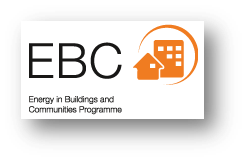Indoor daylight climate-influence of light shelf and model reflectance on light shelf performance in Madrid for hours with unit sunshine fraction
| Title | Indoor daylight climate-influence of light shelf and model reflectance on light shelf performance in Madrid for hours with unit sunshine fraction |
| Publication Type | Journal Article |
| Year of Publication | 2002 |
| Authors | Claros, ST, Soler, A |
| Journal | Building and Environment |
| Volume | 37 |
| Pagination | 587-598 |
| Date Published | Jun |
| ISBN Number | 0360-1323 |
| Accession Number | WOS:000176543900006 |
| Abstract | The present paper deals with the influence of light shelf and model reflectance on light shelf performance. The variation with the day of the year of the mean hourly illuminance values measured at 0.50 m. from a south facing side window in 1 : 10 models has been studied for hours with unit sunshine fraction c. The four light shelves used as both shading devices and potential daylighting systems, were made of the following materials: row aluminium painted with three layers of white matte (LS1), white opaque methacrylate (LS2), mirror (LS3) and row aluminium (LS4). Measurements were performed during three years, each year with one of the three following types of models. Models type A: walls and floor painted black matte and ceiling white matte, Models type B: painted for realistic reflectance values, and Models type C: painted white matte. It was observed with type A models that the dependence of illuminance with the day of the year was similar for LS1-LS2 on one hand, and LS3-LS4 on the other hand, with LS2 and LS3 performing better as daylighting systems than LS1 and LS4, respectively. Thus, most of the study has focused on the performance of LS2 and LS3. For type A models relative light shelf efficiency;1, defined as the ratio between illuminance inside the model equipped with the light shelf and a reference model without light shelf, was always higher than 1 for LS2 and LS3. However for type B models, eta for these light shelves was close to 1 or even smaller, and for type C models eta was clearly lower than 1. In general the methacrylate light shelf performed better than the mirror light shelf for the central months of the year, while the mirror light shelf performed better for about the first three months and last three months of the year. The methacrylate light shelf gave the smallest range of interior illuminance values throughout the year. Although for type B models and LS2-LS3, values of eta clearly higher than 1 were not obtained at the measurement point, use of a light shelf, specially in the long over heated season is recommended for Madrid, because of the shading effect not available for the reference model. (C) 2002 Elsevier Science Ltd. All rights reserved. |

 EBC is a programme of the International Energy Agency (IEA)
EBC is a programme of the International Energy Agency (IEA)